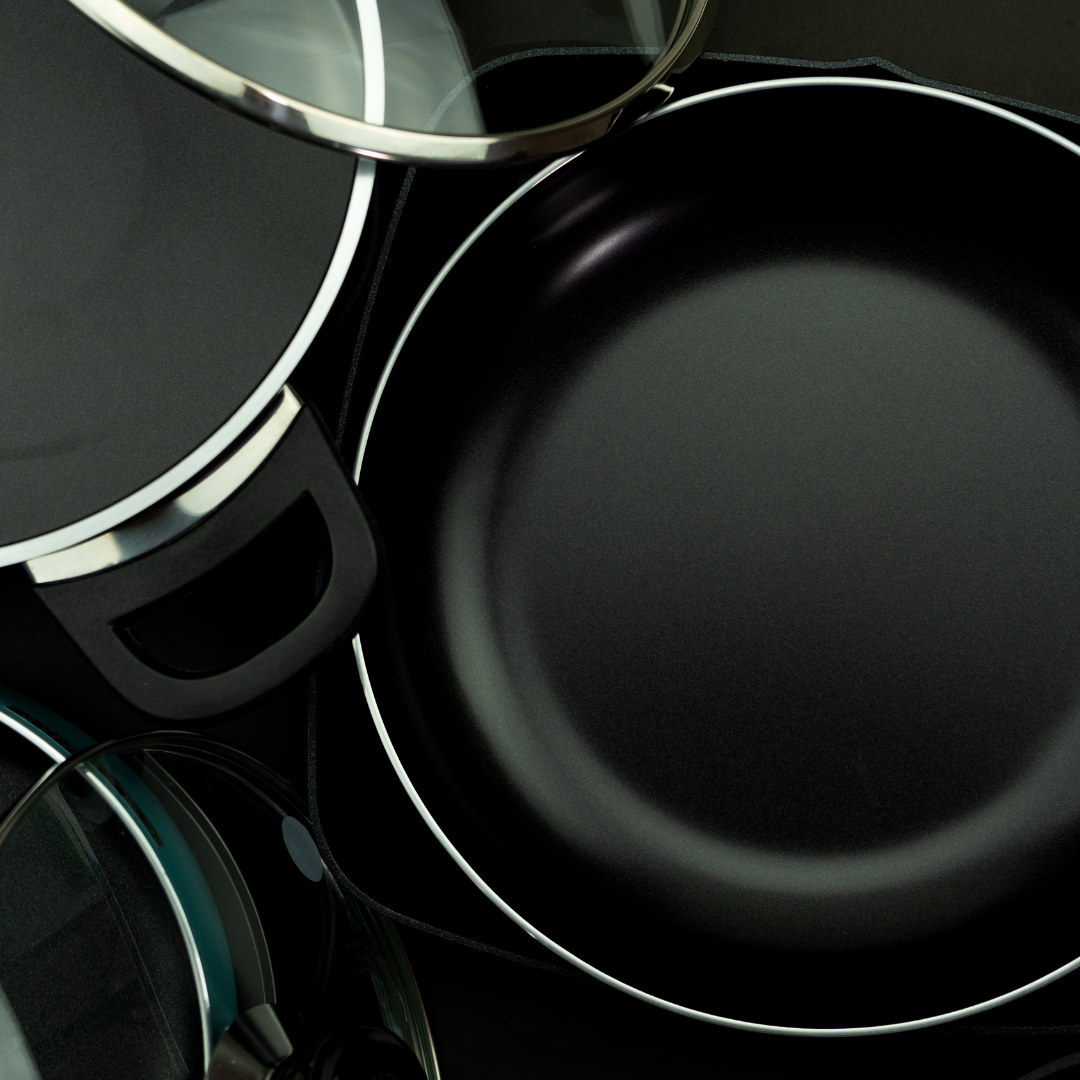I was recently at a friend’s house over the holidays and offered to cook us a nice Christmas Day dinner. One morning, I decided to make breakfast and opened his cupboards. The only pan he had was a cast iron one—but it was severely rusted.
I told him there was no way I would cook on that rusted pan, so he offered to buy a new one, figuring he needed it anyway. I explained that cooking on a rusted pan contaminates food with rust—and rust is definitely something you shouldn’t ingest! You could see on his face he’d never really thought about it but agreed it made sense.
Keep in mind, cast iron cookware is amazing—but it can quickly become toxic if not properly cared for.
When we walked into Canadian Tire to look at pans, my friend immediately picked up a T-fal non-stick pan. I said, “Absolutely not, put that down.” He didn’t understand why I was so against it, which surprised me. Why wasn’t he concerned? I thought everyone knew how bad Teflon can be for your health.
A Short History of Teflon
DuPont originally manufactured Teflon. The company still exists as Chemours and continues to make this product.
When Teflon was first created, it contained a highly toxic chemical called PFOA. In 1998, people living near the factory filed lawsuits against DuPont for severe health problems, including cancer, linked to PFOA exposure. Rivers and soil near the plant had dangerously high levels of this chemical, causing cattle deaths and human illnesses. Despite this, the company settled and continued production without significant changes.
Leaked internal documents revealed DuPont knew about PFOA’s dangers since 1961 and the contamination of local water supplies since 1984. For decades, they hid this information while continuing to use the chemical.
PFOAs are concerning because they don’t break down easily, accumulating in our bodies and environment. Low levels have been found in almost every person tested worldwide.
DuPont stopped using PFOA in 2013, and it was banned in the US by 2015. However, in 2017, DuPont settled over 3,550 lawsuits related to PFOA exposure for $671 million, but still refused full accountability.
Is Teflon Safe Now?
Modern Teflon contains Polytetrafluoroethylene (PTFE), which can still be toxic. T-fal claims PTFE only releases harmful gases above 500°F and that it’s safe to use. However, studies show PTFE-coated pans emit chemicals even at normal cooking temperatures.
There’s even a term called “Teflon flu” describing sickness caused by these fumes. It’s shocking that these pans are still widely used despite the risks.
When the coating chips or scratches—yes, even small scratches matter—it can release toxic particles into your food.
How to Minimize Exposure to Toxic Cookware
We can’t completely avoid toxins in our homes, environment, or food—but we can reduce exposure by choosing safer cookware. These chemicals affect our health down to a cellular level. Here are some of the safest options:
Safe & Healthy Cookware:
1. 18/10 Stainless Steel
Durable and resistant to rust, it doesn’t leach harmful chemicals. Made from solid materials, it’s a reliable, non-toxic option.
2. Cast Iron
Composed of about 98% iron and 2% carbon, it’s one of my favorite pans for great browning and flavor. It can be non-stick if seasoned properly.
Care tips: Avoid soap—rinse with water and lightly scrub if needed. Dry immediately on low heat, then rub with a teaspoon of avocado oil. Store it in a dry place (I keep mine in the oven).
Fun fact: Cooking with a well-seasoned cast iron pan adds iron to your food! Be cautious if you already have high iron levels.
3. 100% Non-Toxic Ceramic
Ensure your ceramic cookware is 100% non-toxic, free from heavy metals, coatings, and dyes. Always do your research before buying.
Pro tips: Use wooden utensils with all cookware to avoid scratches. Thrift stores and garage sales are great places to find affordable, quality used cookware—especially cast iron, which improves with seasoning over time.
Cookware to Avoid:
1. Teflon (T-Fal)
Contains PTFE, which releases harmful gases during cooking. Avoid to protect your health.
2. Aluminum (including foil & baking sheets)
Linked to Alzheimer’s and autoimmune disorders, aluminum is a neurotoxin. Cooking with it can also cause leaching of heavy metals like nickel, copper, lead, arsenic, and cadmium into food.
3. Copper
Toxic in excess, daily use can cause dangerous copper buildup, leading to nervous system issues, cancer, kidney damage, and more.
Avoiding heavy metals and chemicals entirely is impossible, but awareness helps reduce exposure. Our bodies can detoxify toxins, but only up to a point. Stay mindful of your household products and prioritize your health!

